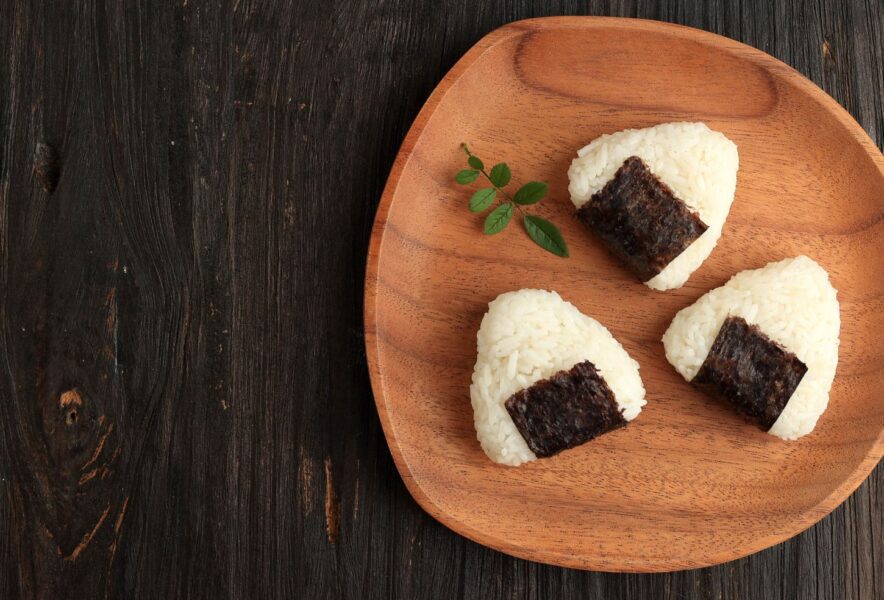Onigiri, or Japanese rice balls, have been a staple of Japanese cuisine for centuries. With their simple yet flavorful nature, onigiri offers a taste of Japan’s culinary history and cultural significance. From traditional fillings to modern varieties, onigiri continues to be a beloved food that represents care, comfort, and a connection to home. Let’s explore the fascinating history, cultural importance, and the best places to enjoy onigiri in Japan.
The Origins of Onigiri: A Snack with Centuries-Old History
Onigiri’s history can be traced back over a thousand years, with evidence of rice balls appearing as early as the Heian period (794–1185). In ancient Japan, people would press rice into easy-to-carry shapes for convenience during long journeys or fieldwork. These early rice balls, which were either shaped by hand or wrapped in bamboo leaves, provided a portable, filling snack. As time went on, onigiri evolved with the addition of nori (seaweed) and fillings such as umeboshi (pickled plum) and salmon, making it not only practical but also a beloved food symbolizing care and tradition.
Different Types of Onigiri: From Traditional to Creative Fillings
Onigiri’s versatility has allowed it to adapt to the tastes of generations. Traditional fillings such as umeboshi, kombu (simmered seaweed), and grilled salmon are still widely enjoyed today, preserving the simplicity and comfort of this ancient food. These fillings not only enhance the flavor of the rice but also helped preserve the onigiri in pre-refrigeration times.
In modern times, onigiri has evolved to include a wide variety of creative fillings. From spicy tuna and teriyaki chicken to cheese and fusion flavors like Korean barbecue, today’s onigiri caters to all palates. This flexibility makes it a favorite snack or light meal for all ages, offering a blend of both traditional and modern tastes.
Onigiri in Japanese Culture: More Than Just a Snack
Onigiri holds a deep emotional and cultural significance in Japan. It is often seen as a symbol of love and care, particularly in the context of family. Parents commonly prepare onigiri for their children’s school lunches, and this simple act of making rice balls has become a gesture of affection. The cultural connection to home and family makes onigiri more than just food—it’s a way to express care and bring comfort.
Onigiri also plays a role in Japanese seasonal celebrations, such as hanami (cherry blossom viewing) and picnics, where it is shared among friends and family. Its portability, ease of preparation, and versatility make it a central part of Japanese life, especially during outdoor gatherings.
How to Make Onigiri at Home: A Simple Recipe
Making onigiri at home is both easy and rewarding. Here’s a basic recipe for traditional onigiri:
Ingredients:
- Cooked Japanese short-grain rice
- Salt
- Nori (seaweed sheets)
- Your choice of filling (e.g., grilled salmon, umeboshi, tuna)
Instructions:
- Wet your hands and sprinkle them with salt to prevent the rice from sticking.
- Take a handful of rice and gently shape it into a ball or triangle.
- Press your chosen filling into the center of the rice ball and cover it with more rice.
- Wrap a piece of nori around the outside of the onigiri.
Onigiri can be enjoyed warm or cold, making it perfect for any meal or snack.
Where to Find the Best Onigiri in Japan: From Konbini to Specialty Shops
Japan offers endless options for finding delicious onigiri. Konbini (convenience stores) like 7-Eleven, Lawson, and FamilyMart are well-known for their fresh, affordable onigiri. Available throughout the day, these stores offer a wide variety of fillings, making them a convenient option for those on the go.
For a more artisanal onigiri experience, a visit to Onigiri Asakusa Yadoroku is highly recommended. Located in Tokyo, Onigiri Asakusa Yadoroku is Japan’s oldest onigiri shop, with a history dating back to 1954. This specialty shop focuses on using high-quality ingredients and time-honored techniques to craft each rice ball. From the selection of premium rice to the carefully prepared fillings, Yadoroku treats onigiri as an art form, ensuring that each bite is a perfect blend of flavor and tradition. To learn more or visit, check out their website here.

Comment